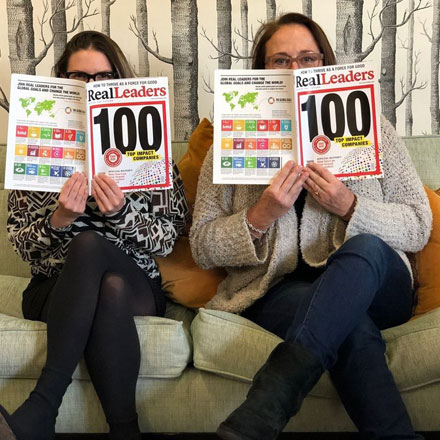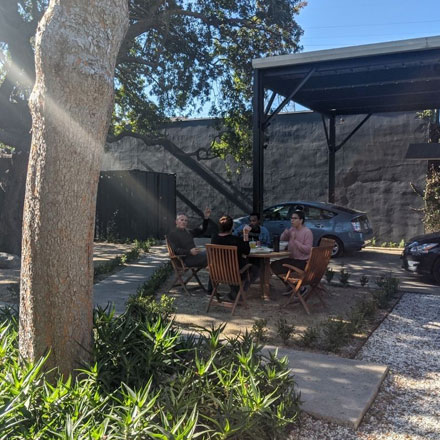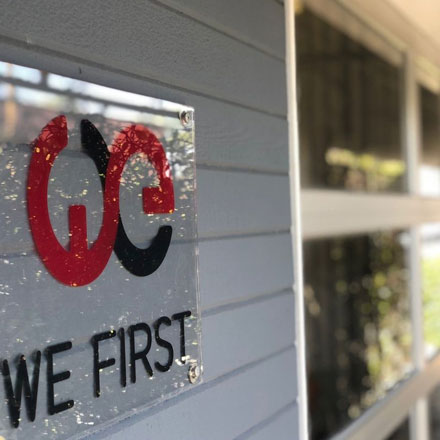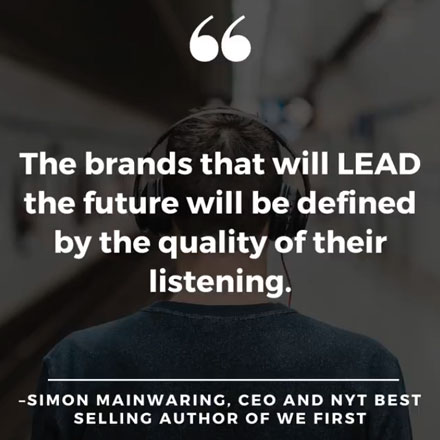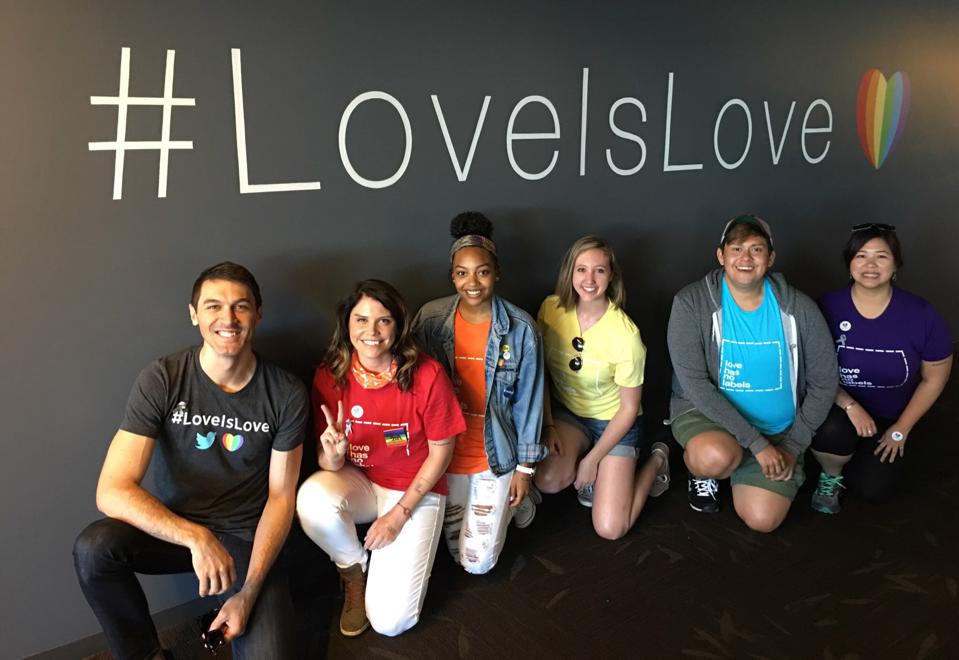
Blog
Purpose At Work: The Ad Council’s Critical Voice In Leading National Cultural Conversations
It would be almost impossible for anyone living in the US for the past four generations to have never encountered the ubiquitous logo of The Advertising Council. Commonly known as the Ad Council, its little square emblem appears at the end of, or the bottom of, so many iconic campaigns that it might be easy to take those ads’ creator for granted.
So, what exactly does the Ad Council do? The short answer is that it plays a primary role in messaging people about the critical challenges we all care most about. How? In short, through PSA’s: Public Service Announcements. If you’ve seen an ad about HIV-, COVID-, or suicide prevention, Alzheimer’s awareness, driving under the influence, emergency preparedness, diversity & inclusion, disaster relief, pet adoption, or a host of other issues-oriented campaigns in need of public education and awareness — it’s likely it was produced, distributed, and promoted by the Ad Council.
The nonprofit organization makes such ads in partnership with their various sponsors, which include other nonprofits, non-governmental organizations — even US government agencies. In the case of its recent vaccine promotion work, it’s collaborating with more than 300 partners across sectors.
Maybe the clearest key to the Ad Council’s modern role is in its original name in 1942: The War Advertising Council. Founded with contemporary business titans to bring the disparate and rival ad industry together “in service of social good” — just weeks after the attack on Pearl Harbor.
Into the public consciousness quickly came “Buy War Bonds” and “Loose Lips Sink Ships.” The council encouraged people to plant victory gardens. It even came up with the idea for the famous “Rosie the Riveter” campaign, which encouraged women to take off their kitchen aprons and wear work uniforms to keep the economy going while men — mostly — were off at war.MORE FOR YOUIn Crypto ‘Arms Race’ For Mass Adoption, Companies Ink Sports Sponsorships Worth Hundreds Of MillionsCAA Signs Jenkins The Valet: Is This A Sign That Hollywood Is Embracing NFTs?HPE’s Sandy Ono On Insights At Hyper Speed To Drive Growth And The Value Of Marketing’s Currency
After World War II, President Truman encouraged the Ad Council to continue its work as a “peacetime public service organization addressing the most pressing social issues of the day.” And so it did.
“The Ad Council has been putting out public service campaigns for 75 years to raise awareness, inspire action, and save lives on many issues,” Michelle Hillman, Chief Campaign Development Officer, tells We First. “Always focused on what the most culturally relevant issues of the day are. So, whether it’s preventing polio in the fifties, racial discrimination in the sixties, AIDS in the eighties. We’re always tackling the most pressing issues of the day. And we really are a convener of the best that our industry has to bring to bear.”
In fact, in the nearly eight decades since Truman’s request, some of the most enduring, memorable, and impactful ad campaigns came through the Ad Council: Smokey Bear: “Only you can prevent forest fires.” The crying Native American of “Keep America Beautiful”: “People Start Pollution. People can stop it.” There was McGruff the crime dog’s “Take a Bite Out of Crime.” Nancy Reagan’s “Just Say No.” The United Negro College Fund’s “A Mind Is a Terrible Thing to Waste.” You might remember Vince & Larry, the Crash Test Dummies (“You Could Learn a Lot From a Dummy”), and the “Friends Don’t Let Friends Drive Drunk” spots.
The Ad Council’s convergence of cause, creativity, & culture
In its “DNA,” Hillman asserts, the Ad Council is all about “purpose-driven marketing …We bring the greatest strengths of the marketing community, the technology community, the media community, and the creative community together to tackle all of the issues that we work on.”
As such, the Ad Council is an exemplary Lead With We institution. In fact, it’s an arbiter, aggregator, and enhancer of much of the thinking and execution behind modern Lead With We. It might even be one of the first organizations to focus on high-level, cross-sector, public-benefit collaborations.
“We’ve been changing behavior and creating social norms since our inception,” says Hillman. The Ad Council both responds to — and drives/shapes — culture, she says. “Everything is really rooted in the goal of driving positive change in our country, from the issues that we decide to work on, the research that we delve into with consumers that drives our creative execution, to our media amplification, and the way that we evaluate what we do. Everything is about strengthening health, safety, and community in our country, trying to drive positive social change.” Hillman is right in asserting that “We’re a little bit of a unique organization in that way — everything we do and touch is really about solving social issues at scale.”
No slant, spin, or plugs: how to stay apolitical
By its mandate and long practice, the issues The Ad Council tackles must be national in scope, yet accessible for amplification on the community level, Hillman says. They must be critical, urgent — and noncommercial. It’s not selling any product or service. It’s selling people on ideas that ideally change individual behavior, which, once compounded, can radically alter society for the better.
The Ad Council maintains an executive committee that makes the final determination of whether to get involved in a given campaign. A big element of that calculus is sidestepping issues that are overtly political or partisan or proposed to influence legislation — it’s not a lobbying organization.
Having said that, it’s hard to argue that some of the council’s more controversial campaigns, such as “Love Has No Labels,” created in partnership with the Anti-Defamation League, don’t spark partisan animus — and also ultimately influence government thinking. As the second most viewed social activism video of all time, successful PSA saturation is bound to exert some impact on policy.
In any case, remaining apolitical is getting harder and harder as our confluence of crisis — social and racial justice, the environmental emergency, a global pandemic — compounds. “The world,” says Hillman, “is more complex, and the list of challenges is growing by the day instead of shrinking. So, at any given time we’re working on at least 30 different discrete campaigns that are dedicated to social good and impacting American life. Each of our campaigns goes through a really rigorous vetting process before we take it on. Everything we work on has to be nondenominational and non-partisan, which in these times is increasingly difficult.”

Impressions: measuring results
Another key element of the council’s decision-making involves the extent to which the potential collaborators can assess outcomes and quantify the impact in the real world. Says Hillman: “We want to work on something that’s going to be measurable and actionable so that we can show that we’re really making a difference.”
In this manner, to take one example, its Rosie campaign in World War II “ultimately was responsible for getting 2 million women into the workforce,” NPR reported in 2012. During the heyday of its safety belt education campaigns, seat belt usage increased by 65 percent, saved an estimated 85,000 lives, and $3.2 billion in costs to society, the Ad Council reports. It’s also determined that since launching its “Friends Don’t Let Friends Drive Drunk” campaign in 1983, more than 68 percent of Americans report that they have tried to prevent someone from driving after drinking.
Overexposure: COVID is released
Obviously, promoting COVID-19 vaccine uptake has been one of the Ad Council’s most daunting challenges. Hillman says, “In the first 18 weeks of the work that we’ve done, we know that we’ve received close to $150 million of donated media. We know that 70 percent of Americans aged 13-plus have actually seen the creative work we put into the world. We’ve seen 60 million people engage with our messages across social and earned media. We’ve sent more than 6 million people to getvaccineanswers.org, where they education on the questions that they have, trying to decide if they’re going to go get this vaccine.”
Are people changing their attitudes? Hillman asks. Are they more likely to get vaccinated as a result of the Ad Council’s efforts? The metrics and evaluation framework involved in making that determination are complex, to say the least, according to Hillman. In fact, the whole process, from collaboration to creation to promotion, all posed challenges as novel as the virus itself.
“Listen,” she says, “Here we are facing the greatest health crisis of our time and the fastest vaccine that’s ever been created in our lifetime. The ability to have that as a solution to get us back to where we need to go. But understanding that there was this giant elephant in the room — hesitancy — and knowing that if we don’t get the right communications out about the vaccine, it’s not going to matter that we created this vaccine, right? So understanding that there were, and are, so many different audiences that have so many different specific obstacles and questions” was a necessary basis for moving forward.
“How could we take what we’re wired to do to react in a crisis, and provide a communications effort that’s going to get people the information and education they need to move them to a certain behavior, to be able to get as many partners as we can to jump on board, and have a message that is going to be synergistic and breakthrough and be able to be amplified so that people understand what they need to do?”
Consider this intricacy of execution: Whatever ads the council ran would have to be flexible enough to satisfy more than 300 different collaborators — brand partners, media partners, tech partners, and ground game players, such as the NAACP. “How could everyone jump in together and be able to play from the same playbook and be consistent in messaging?” Hillman recalls asking in the early days. “And so, we did a lot of work at the beginning.” It worked with the collaborators and consultants. It listened to the public. It surveyed widely and conducted extensive research. And finally determined a frame and tone for the campaign:
“If we could normalize hesitancy for people … that, of course, they have questions … that’s a natural part of our journey … and we can remind them of all those wonderful moments that we were all missing, whether it was hugs, or being with our grandparents, or seeing our colleagues, or our kids going to school. If we could put those two things together and then drive people to get the information they needed to hopefully make their own empowered choice, we would be doing our job and moving people along the continuum from hesitancy to confidence.”
The Ad Council relied on the New York / San Francisco firm Pereira O’Dell, “and really dug in,” says Hillman. Together, the collaborators developed the “It’s Up To You” campaign.
According to the shop, “We created ‘It’s Up To You’ as an idea architected for scale. To be used by many and to go everywhere. From grassroots activations at churches to informative notes on streaming TV; from ‘Know More’ buttons on search engines to emotional stories told on TV. We even had four former Presidents of the United States and their First Ladies join the effort.”
Indeed, says Hillman, it was all about collaboration — which cannot assume likemindedness. “We were able to join with our partners that really were culturally relevant experts for each of the audiences that we were talking to. Working with the [DC-based advertising firm] JOY Collective to target the Black audience and working with Alma [ad agency of Miami, Chicago, San Francisco, and Tallahassee] on the Hispanic audience, and developing programs from an advertising perspective air game, all the way down to Zoom town halls, faith-based leadership, involved influencers …” The list of partners is a Lead With We model.
Along the way, the ad-creation process involved the partners trying to grasp and untangle “deep-rooted cultural nuances,” necessary because a “one size fits all” approach would never work with this campaign. The council even recruited descendants of the shameful Tuskegee experiment to both understand and work to overcome the inherent distrust many in the Black community have toward public health initiatives — with rational reason.
In addition, it had to work with experts on Conservative, rural, urban, and faith-oriented audiences, among others. “We went hyper-local,” says Hillman. In the end, “Everyone took the message and really made it their own,” Hillman says. “We knew that the messengers were really going to be important for each of the audiences that we worked on. And from there, the campaign just exploded into many different facets.”
That hyper-localization is one reason 60 to 70 percent of consumers that the Ad Council survey say they feel more knowledgeable and less resistant after visiting getvaccineanswers.org. “So, for us,” says Hillman, “we know that it’s working.”
But has the campaign been successful in truly converting some in what Hillman calls the “movable middle … strongly opinionated but open to new information?” In other words, are people getting vaccinated as a result of the campaign? Our country will find out soon enough. “But being able to empower people to feel like they had a role, this wasn’t some top-down government effort trying to encourage them to get the vaccine I think it was really critical.”

Space for everyone: pre-competitive collaboration
The COVID Collaborative is a national assembly of experts, leaders, and institutions in health, education, and the economy as well as associations supporting national COVID-19 response efforts. In March 2021, as an extension of its COVID-19 Vaccine Education Initiative, the Ad Council partnered with CC, launching a new campaign of PSAs. They even looped in thirteen leading sports leagues and organizations — and the likes of Willie Nelson.
“One of the beautiful things about the Ad Council,” says Hillman, “is that, in the spirit of collective action and collective good, people come and check their competitive differences aside, right? So, you can work with JPMorgan Chase, Bank of America, and Citibank all as partners and funders of this campaign. They can all take on that ‘It’s Up To You’ messaging, use the open-source playbook, use our iconography, support all of the work we’re all doing — and then also have the ability to carve out their own lanes and support their own messaging as well.”
Yes, a collectivized purpose — the betterment of humanity and the planet — not only doesn’t negate the opportunity to express a unique manifestation of purpose appropriate for your own businesses’ values, space, and expertise — it provides a framework for doing just that and more through collaboration with other entities.
Along those lines, the Health Action Alliance — a partnership co-founded by the Ad Council, the Business Roundtable, and the de Beaumont, Robert Wood Johnson, and CDC foundations — provides free, open-sourced information to help everyone in the business community better respond to the pandemic by serving their own crews, consumers, and communities.
The HAA’s Fortune 500 company partners, along with its small business members, together represent about 88 million workers — massive potential impact. All of their leaders,” Hillman insists, “are really looking to play a role in talking to their employees and helping them respond to this crisis. To figure out how to get them vaccinated, how to get them what they need for their families.” The HAA “provides a framework, and a program, and materials, and speakers, and playbooks, so that consistently companies across the country have somewhere to turn.”
Not only on COVID-related issues. The program’s been so successful, Hillman says, that “I think it’s probably work that will continue as companies are looking to advance health equity” in general, based on “some of the issues that have really come out as a result of COVID shining a light” on other systemic disparities.
Of the Ad Council’s many partnerships and campaigns, Hillman says, “Never before have I seen brands and marketers come together in such a united front to tackle these issues and to be able to put their ego aside and to really focus on the greater good first. These issues that we know no one’s going to tackle if we don’t all tackle them together.”
So, Hillman is “hopeful and happy and feeling positive that we can really make some systemic changes on really big issues, whether it’s the environment, or it’s health inequity. Whatever’s next in mental health awareness, whatever’s next in the pipeline — we are better together.”
The more you know …
If you’d like to dive deeper with more purpose-led companies like The Advertising Council, check out the Lead with We podcast here, so that you too can build a company that transforms consumer behavior and our future.


